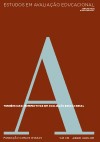A comparison of mathematical frameworks from Saeb and Naep
DOI:
https://doi.org/10.18222/eae266103029Keywords:
Mathematics, Evaluation system of basic education, National assessment of Educational progress, ResumesAbstract
This article aims to analyze the structural similarities and differences of the frameworks of the Evaluation System of Basic Education (Saeb) and the National Assessment of Educational Progress (Naep). More specifically, it seeks to compare the descriptors of the theme “Space and Shape”, tested on the ninth grade of the Saeb, with those of Geometry, tested on the eighth grade of the Naep. This evaluation seeks to produce information on curricular trends which underlie the choices of skills measured in these assessment systems, that could guide the updating of the mathematical frameworks of the Saeb. The results suggest that both frameworks are similar in the separation of knowledge objects by related content areas and in addressing various cognitive operations; on the other hand, the ways in which the descriptors are presented in each matrix are different. Some similarities between the skills measured in both tests in the analysis of the descriptors of the theme “Space and Shape” can be observed.
Downloads
References
ANDERSON, L. W. et. al. A taxonomy for learning, teaching and assessing: a revision of Bloom’s Taxonomy of Educational Objectives. New York: Addison Wesley Longman, 2001.
BRASIL. Instituto Nacional de Estudos e Pesquisas Educacionais. SAEB 2001: novas perspectivas. Brasília, DF: Inep, 2002.
NATIONAL ASSESSMENT GOVERNING BOARD. Mathematics Framework for the 2013 National Assessment of Educational Progress. Washington, DC: NAGB, 2012. Disponível em: <http://www.nagb.org/content/nagb/assets/documents/publications/frameworks/math-2013-framework.pdf>. Acesso em: 28 jul. 2014.
NEIDORF, T. S.; BINKLEY, M.; GATTIS, K.; NOHARA, D. Comparing Mathematics Content in the National Assessment of Educational Progress (NAEP), Trends in International Mathematics and Science Study (TIMSS), and Program for International Student Assessment (PISA) 2003 Assessments (NCES 2006-029). Washington, DC: U.S. Department of Education. NCES, 2006. Disponível em: <http://nces.ed.gov/ pubsearch>. Acesso em: 28 jul. 2014.
UNITED STATES OF AMERICA. Departament of Education. National Center for Education Statistics. A Comparison of the 2011 Grade 8 NAEP and TIMSS Mathematics and Science Frameworks (NCES 2013-462). 2013. Disponível em: <http://nces.ed.gov/nationsreportcard/pubs/studies/2013462.asp>. Acesso em: 28 jul. 2014.
Downloads
Published
How to Cite
Issue
Section
License
Authors who publish in this journal agree to the following terms:
a. Authors retain the copyright and grant the journal the right to first publication, with the paper simultaneously licensed under the Creative Commons Attribution license that allows the sharing of the paper with acknowledgment of authorship and initial publication in this journal.
b. Authors are authorized to assume additional contracts separately, for non-exclusive distribution of the version of the paper published in this journal (for example publishing in institutional repository or as a book chapter), with acknowledgment of authorship and initial publication in this journal.
c. Authors are allowed and encouraged to publish and distribute their paper on-line (for example in institutional repositories or on their personal page) at any moment before or during the editorial process, as this can generate productive changes, as well as increase the impact and citation of the published paper (See The Effect of Open Access).





